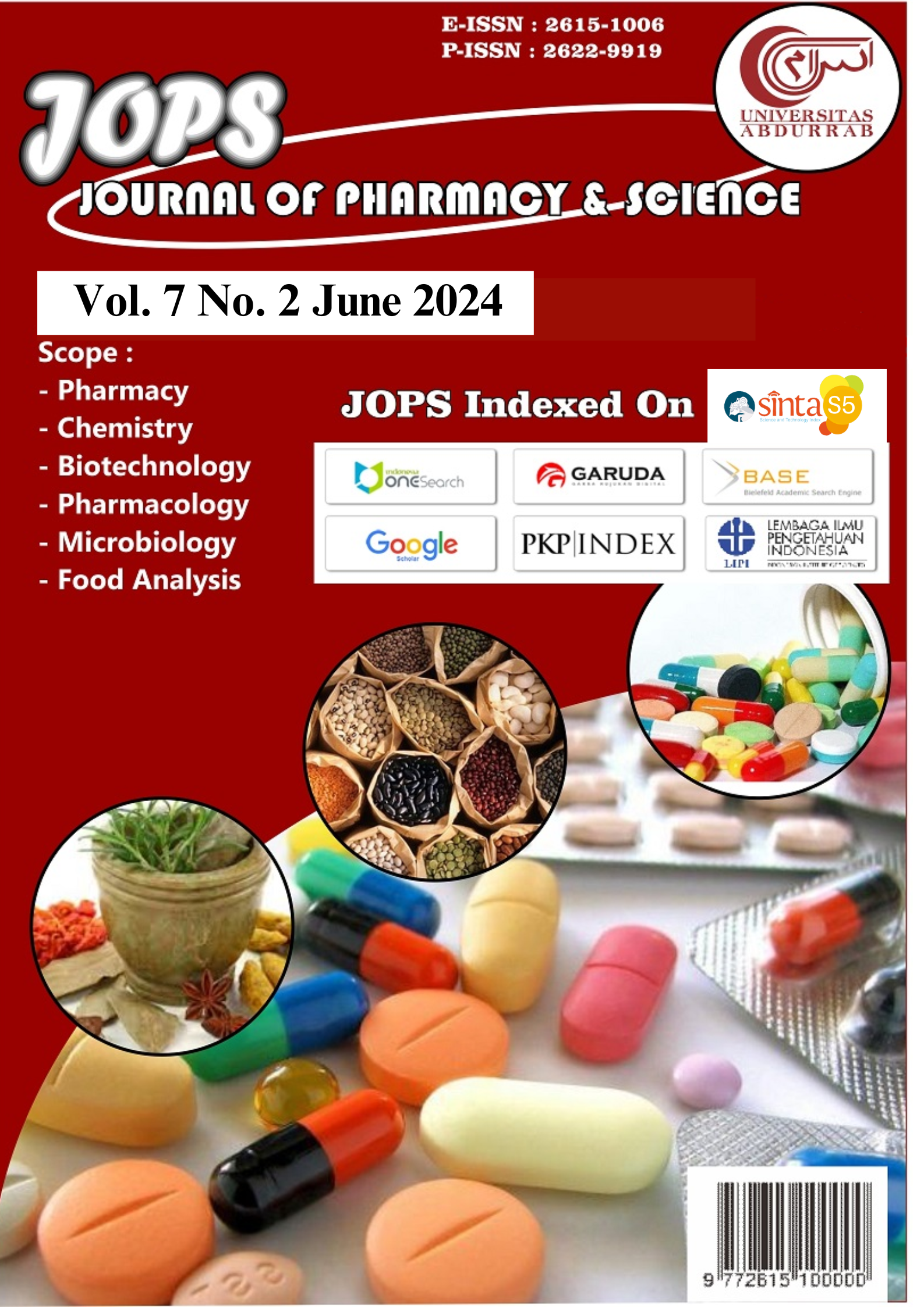Evaluation of Antibiotic Use Based on ATC/DDD Criteria In Children with Pneumonia at RSI Siti Rahmah Padang
DOI:
https://doi.org/10.36341/jops.v7i2.4681Keywords:
Pneumonia, antibiotics, ATC/DDD, PediatricsAbstract
Pneumonia is inflammation or infection of the respiratory tract which causes pain and makes it difficult for sufferers to breathe because there is fluid in the form of pus in the alveoli sacs. Pneumonia is the highest cause of death in the world, especially in children under 5 years of age. Pneumonia caused by bacterial infections is treated using antibiotics. Antibiotics that are used inappropriately can cause bacterial resistance, resulting in worsening infections, an increase in infections, longer hospital stays, and increased health service costs. The aim of this research is to determine the quantitative evaluation of antibiotic use in pediatric patients with pneumonia at RSI Siti Rahmah Padang. This research is observational analytic with a retrospective design. The samples used in this study were pediatric pneumonia patients aged ≤18 years who cmet the inclusion criteria. Quantitative analysis was carried out by calculating the quantity of antibiotics used by pediatric pneumonia patients based on ATC/DDD criteria. The research results showed that the total DDD was 51.69 DDD/100 patient-days with the highest DDD value for the antibiotic ceftriaxone with a value of 19.44 DDD/100 patient-days.
Downloads
Downloads
Published
How to Cite
Issue
Section
License
1. Copyright of all journal manuscripts is held by the JOPS (Journal Of Pharmacy and Science)
2. Formal legal provisions to access digital articles of electronic journal are subject to the provision of the Creative Commons Attribution-ShareAlike license (CC BY-NC-SA), which means that JOPS (Journal Of Pharmacy and Science) is rightful to keep, transfer media/format, manage in the form of databases, maintain, and publish articles.
3. Published manuscripts both printed and electronic are open access for educational, research, and library purposes. Additiponally, the editorial board is not responsible for any violations of copyright law.
licensed under a Creative Commons Attribution-ShareAlike 4.0 International License.










